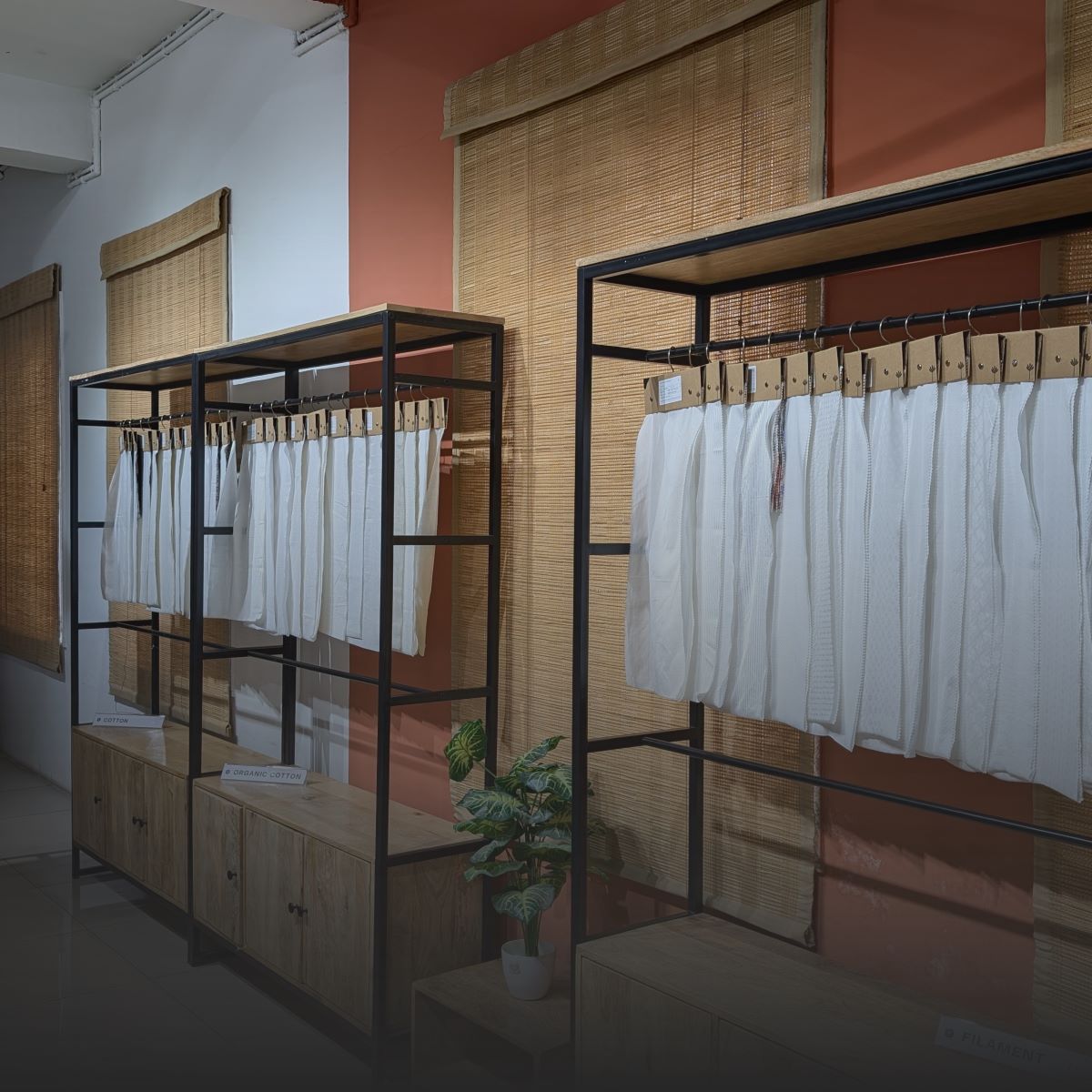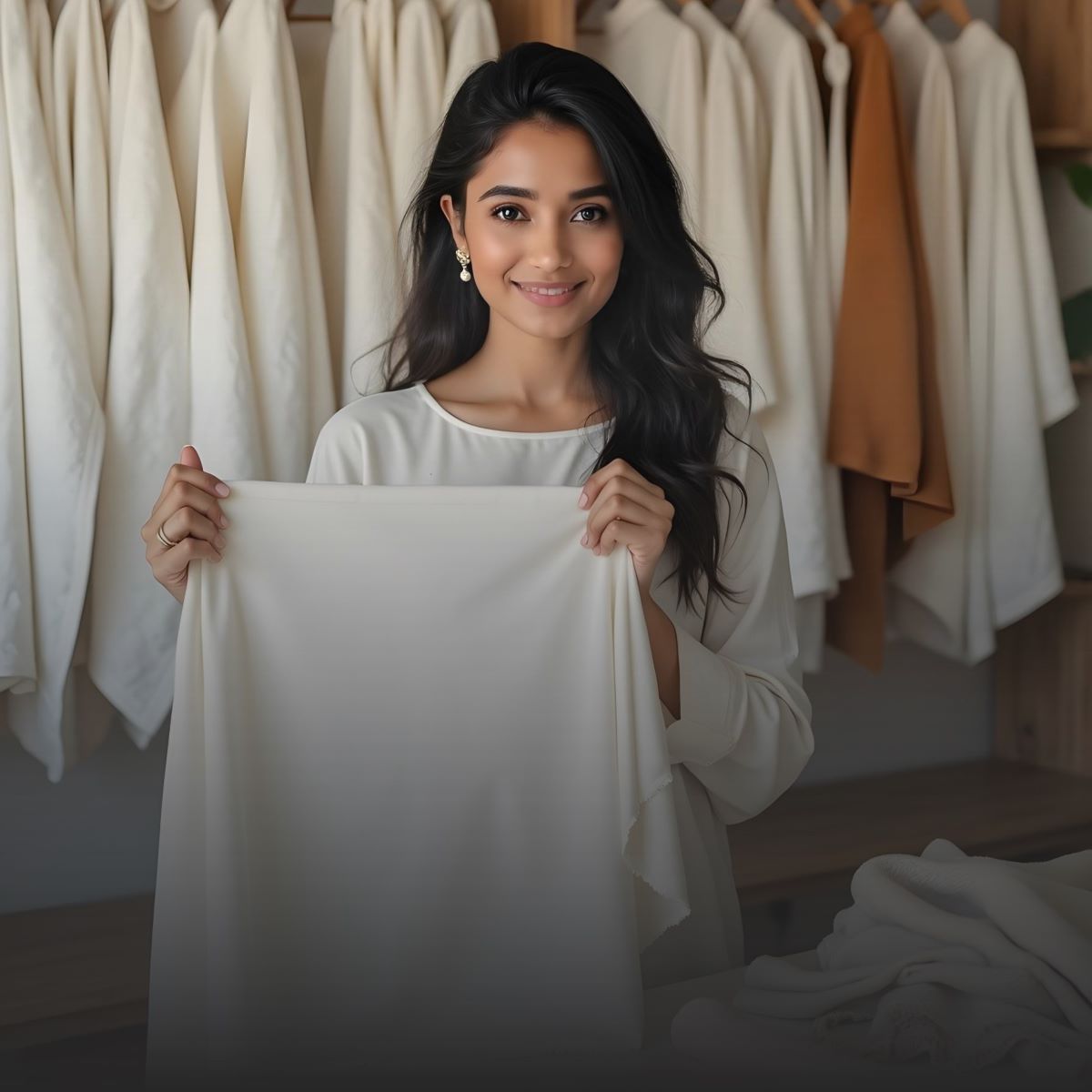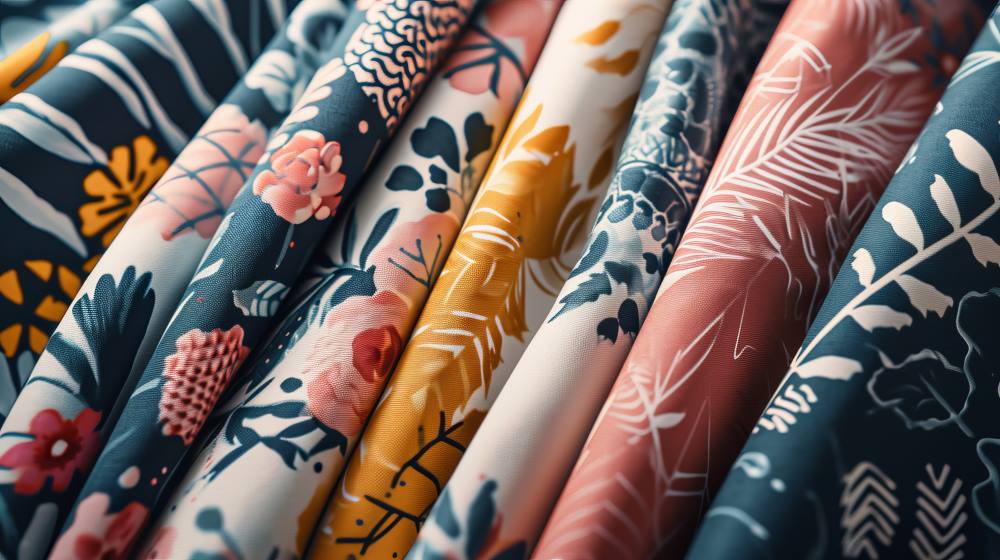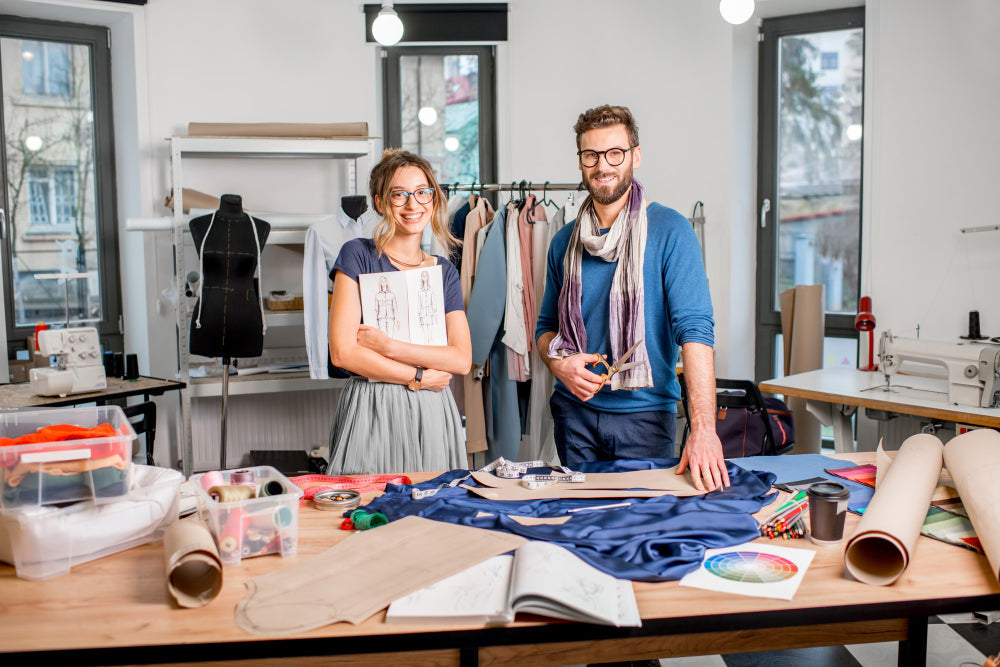In Europe, fashion thrives on a vibrant mix of tradition and innovation, with fabric printing playing a crucial role in breathing life into fresh styles. Innovative printing processes create unique, eye-catching clothes on the Paris runways and for fresh labels in Berlin and Milan.
For new fashion enterprises entering this competitive industry, selecting the appropriate fabric printing method -digital textile printing or screen printing is critical not only for quality and aesthetics but also for cost, speed, and consistency.
In the upcoming article, we shall examine screen printing and digital printing, the two main fabric printing technologies in European fashion. We'll weigh their pros and cons to help you choose the best option for your brand.
Also Read: Digital Textile Printing:- The production process
Understanding The Printing Methods

Printing designs on textiles using different methods is called fabric printing. Regarding cost, quality, and output options, digital printing and screen printing on fabric are the two most popular ways to print on fabric. However, they are very different in how they transfer ink to fabric.
What Is Digital Printing?

Digital printing is a newer, technology-driven method that prints designs directly onto fabric using inkjet printers. The inks are absorbed into the fibres, allowing for intricate, full-colour prints with smooth gradients and photographic quality. Digital printing doesn't need screens or cutouts like screen printing does. This makes it very flexible and good for making patterns with lots of colors and small details.
How The Digital Printing Process Works
- Adding a design: The computer sends the digital art straight to the printer.
- Printing with an inkjet: The printer sprays tiny ink droplets onto the fabric, making designs and colour changes that look like real life.
- How to Fix the Ink: The cloth that has been printed is heated (steamed or cured) to set the ink and make it last longer.
- Wrapping up: The cloth could be washed or softened after printing to improve feel and colourfastness.
Example Of Digital Printing In Europe
Burberry, a high-end fashion house with its main office in London, uses digital printing a lot for its yearly collections. Their complicated plaid patterns and picture prints need to be very precise and have a lot of different colours. For these kinds of designs, digital printing is the best option.
Key Features:
- Best for small batches and customization: Perfect for new businesses, small brands, and designers whose minimum order quantities (MOQs) are cheap or whose designs change often.
- Any number of colours and complicated patterns: Allows for photo-realistic pictures, complex patterns, and prints in multiple colours without charging extra for each colour.
- The feel of soft, breathable fabric: The cloth keeps its natural drape and softness because the ink soaks into the fibres.
- Quick turn-around: Because screens don't need to be set up, production goes faster, which is great for rapid testing and making things as they are needed.
- Eco-friendly: It supports sustainable production because it uses less water, energy, and chemicals than traditional ways.
What Is Screen Printing?

In the cloth business, screen printing is one of the oldest and most common ways to print. To get the pattern on the fabric, you have to push ink through a fine mesh screen, also called a stencil. Because each colour in the design needs its screen, prints with more than one colour need more than one screen.
How The Screen Printing Process Works
Preparing the design: The pattern has different colours, and a screen is set up for each colour. Most of the time, these screens are made of fine mesh stretched tightly on frames.
How to Use Ink: On top of the screen, ink is put down, and a squeegee presses the ink onto the fabric below through the mesh holes.
How to Dry and Cure: After printing, the cloth is either dried or heated to ensure the ink stays put.
Once more, This is repeated for each colour in the design until the whole picture is made.
Example of Screen Printing in Europe
The well-known European streetwear brand Ader Error, which has stores in Paris and Seoul, uses screen printing a lot in its designs. Their strong, artistic designs with few colours work well for screen printing, which makes prints on hoodies and t-shirts that are bright and last a long time.
Key Features:
- Saves money on big orders: Screen printing gets cheaper as the number of orders increases, which is great for making many of the same designs.
- Bright, long-lasting prints: It makes bright colours that last and can be washed many times, making it great for t-shirts, hoodies, and tote bags.
- Works on different fabrics: It can be used on heavy, speciality, or textured fabrics, adding special effects like a puff or glittery inks.
- Feel of a heavier print: The ink sits on the cloth, making the finish thicker and less breathable.
- Complicated to set up: Needs to make a print, which takes more time and costs more money at first.
Comparing Digital and Screen Printing: Essential Factors

Depending on the needs of your business, the size of your order, and the style of your design, each printing method has its place. Let's start with a quick summary before getting into the details:
- Digital printing is flexible, can print small details, and is good for the environment, but it can be more expensive per unit when you print a lot of them.
- Screen printing works best for large quantities and uses bright, long-lasting colours, but it needs larger minimum orders and setup up front.
Order Quantity and Scalability
- Because making stencils is time-consuming and expensive, screen printing needs higher MOQs to be cost-effective. It works well for big, steady batches where the cost per unit decreases as the volume increases.
- Because it takes so little time to set up, digital printing can handle any order size, from a few pieces to a few hundred. This makes it great for on-demand production, sampling, and frequent design changes.
Cost Considerations
- First Investment: Both require expensive tools, but setting up the stencils for screen printing increases start-up costs.
- Cost of production: Screen printing costs less per unit as the order size grows, but digital printing costs the same no matter how many items are ordered.
- How much money you get back (ROI): When you have a lot of repeat orders, screen printing on fabric works well. Digital printing, on the other hand, works better for brands that want to focus on customization and small batches.
- Services for Printing on Demand: Small brands in Eastern Europe can get skilled digital printing without paying a lot of money upfront thanks to platforms like Gelato, CottonBee, Fabriclore, and Printcubator.
Design And Color Capabilities
- Digital print fabric is excellent for making photo-quality, detailed drawings with lots of colours and smooth transitions between them.
- Screen printing is excellent for simple images that stand out with bright, solid colours and special effects like metallic or puff inks.
Print Placement And Feel
- Screen printing can be used in odd places, like next to pockets, but it's mainly used on the fronts, backs, and sleeves.
- Digital printing makes standard places easy and gives prints a softer feel because the ink is absorbed instead of layered.
Durability And Consistency
- The screen-printed patterns last a long time and don't fade or crack.
- With DTG technology, digital prints have gotten better, keeping their softness and sturdiness.
- Consistency: Digital printing ensures that the colours are reproduced evenly, while screen printing may have minor differences because it is done by hand.
Sustainability And Environmental Impact
- Digital printing is better for the environment because it uses water-based, non-toxic colours, uses less energy and water, and makes less waste.
- Plastisol inks have been used in screen printing for a long time, which is bad for the environment. However, newer water-based and eco-friendly options are becoming more popular. Picking an eco-friendly printer is very important.
Design Intricacy And Detail
- With high halftone precision, digital printing can make fine lines, small details, and photographic images.
-
Screen printing is bad at small details but great at significant, bold patterns.
Also Read: A Guide to Digital Fabric Printing
Detailed Comparison Table
|
Feature |
Digital Printing |
Screen Printing |
|
Minimum Order Quantity (MOQ) |
Very low, ideal for small batches |
Higher, best for large volume orders |
|
Setup Time & Cost |
Minimal, quick setup, no screens needed |
High, stencil preparation required for each color |
|
Color Range |
Unlimited colors, including gradients and photo-realistic images |
Limited per stencil, best for solid colors |
|
Design Complexity |
Excellent for intricate, multi-color, photographic designs |
Best for simple, bold graphics |
|
Fabric Feel |
Soft, lightweight, ink absorbed into fabric |
Heavier feel, ink sits on fabric surface, textured |
|
Durability |
Good, may fade faster with heavy washing |
Excellent durability, very colorfast |
|
Production Speed |
Fast for small batches |
Fast for large batches |
|
Eco-Friendliness |
High — less waste, water, and chemicals |
Moderate, improving with water-based inks |
|
Cost Efficiency |
Best for small, frequent, or varied orders |
Best for bulk production with consistent designs |
How To Choose The Right Printing Method For Your Brand

When choosing between screen printing and digital printing, consider your order size, design complexity, fabric type, budget, and delivery time. Knowing your brand's priorities, budget, and design needs will assist you choose. Use this simple guideline:
Choose Screen Printing If:
- You get large volume orders, usually more than 50 pieces.
- Few solid colours (1-4) are used in your design.
- You want vibrant, durable prints that may be washed often.
- You are printing on cotton, polyester, or blends fabrics that can handle thick layers of ink.
Example: Screen printing is often used for the big logos and simple patterns on European festival goods, like the Glastonbury Festival t-shirts.
Choose Digital Printing If:
- Sample orders or small runs are what you need.
- Complex means that it has a lot of colours or photographic features.
- You want smooth, soft ink that doesn't feel thick.
- Quick turnaround or on-demand printing is what you need.
- Printing on silk or light polyester, which are suitable for fine features, is what you're doing.
Example: To cut down on waste, designer brands like London-based Stella McCartney use digital printing to make prints on delicate, detailed, and long-lasting fabrics.
Brands In Eastern Europe: Think Digitally First

For Eastern European small and new names that are:
- Trying out the market.
- Putting out a new set of prints.
- Putting ecology and zero waste first.
- Having to work with minimal funds.
Digital printing gives you more options and lower risk, especially when you work with suppliers like Fabriclore, who offer fast global delivery (10–15 days across Europe) and low MOQ custom fabric printing.
Real-World Examples From Europe
- Local Heroes (Poland): makes streetwear with bold, graphic prints using screen printing. The clothes are made to last and are made in significant quantities.
- Wood Wood (Denmark) combines the two, using digital printing for complex, limited-edition sets and screen printing for simple items.
- Mads Nørgaard (Denmark): Picks digital printing to keep the fine details and softness of soft organic cotton clothes.
How Fabriclore Supports Your Fabric Printing Needs

Fabriclore, a wholesale digital fabric printing and screen print fabric supplier in Europe, provides digital and screen printing services for modern fashion businesses. Key points are:
- Start with just 100 meters per design (digital printing).
- Print your artwork or select from 1000+ patterns.
- Multiple print methods: Digital, Screen, Handblock.
- Sustainable fabrics are available: Organic cotton, Modal, TENCEL™, and Bamboo.
-
Global shipping to Poland, Hungary, Romania, Latvia, and beyond.
Empowering Eastern European Fashion Startups & Designers With Low MOQ Fabric Printing Solutions

Fashion brands in Eastern Europe and emerging markets are trying to be more creative. To help them along the way, we offer low MOQ custom fabric printing solutions in Estonia, Latvia, Slovenia, Hungary, Greece, and the Balkans, Central Asia, Africa, the Caribbean, and South America.
-
Europe: Fabric Wholesale in Estonia, Latvia, Slovenia, Hungary, and Greece.
-
Balkans & Central Asia: Including Kazakhstan, Bosnia & Herzegovina, and North Macedonia.
-
Africa & Caribbean: Including Kenya and Trinidad & Tobago.
- South America: Including Colombia and Bogotá.
Learn more or get started: fabriclore.com
Conclusion
In the fashion and cloth market in Eastern Europe, digital and screen printing are very important. Digital printing is great for brands that want to make unique, small batches because it is flexible, can be customized, and is good for the environment. Screen printing is still the best way to make big, colorful prints that last, especially when saving money is important.
Take a close look at your brand's creative vision, order sizes, fabric types, and budget to choose the best printing method to help you grow and maintain product quality.
Also Read: The Benefits of Digital Printing for Fashion Designers
FAQs
1. What is the minimum order quantity (MOQ) for digital printing in Eastern Europe?
Digital printing has very low minimum order quantities, usually just 1 to 100 meters. This makes it great for new businesses and small batches.
2. How does screen printing compare regarding cost for large orders?
When you order a lot of things, screen printing is a cheap choice because the initial setup costs are spread out over many items, lowering the cost of each one.
3. Are digital printing inks eco-friendly?
Digital printing generally employs water-based, non-toxic inks that require less water and energy, positioning it as a more eco-friendly option.
4. Can screen printing produce multi-colour and photographic designs?
Screen printing is most effective when using vibrant, intense colours and uncomplicated designs. Producing multi-colour or photo-realistic designs in this manner presents significant challenges and can be pretty expensive.
5. Which fabrics are suitable for digital and screen printing?
Digital printing is effective on natural fibres such as cotton, modal, and TENCEL™, whereas screen printing can be applied to a wider variety, including heavier and textured fabrics.
Elevate Your Craft with Europe’s Trusted Fabric Wholesale Supplier!
We also happen to be a magnet for suggestions, and would love to catch yours….throw us yours on hello@fabriclore.com




